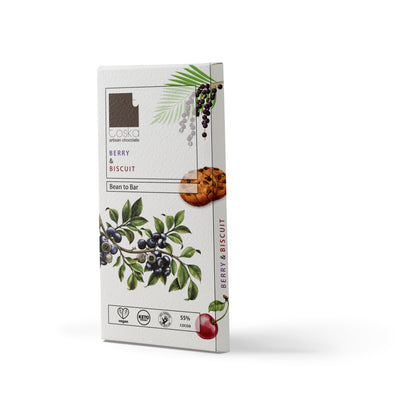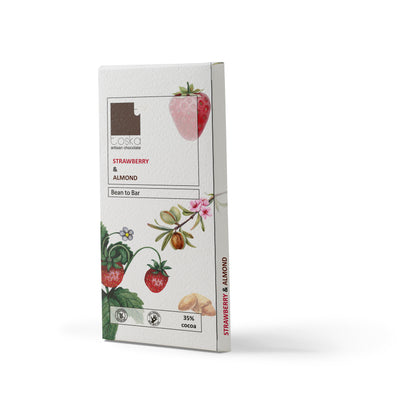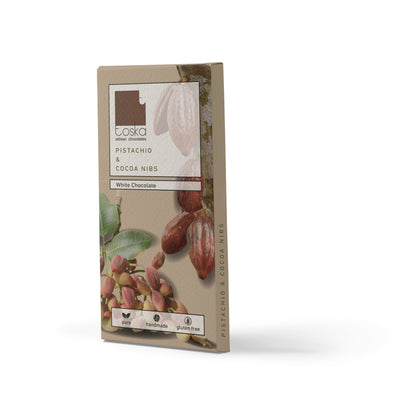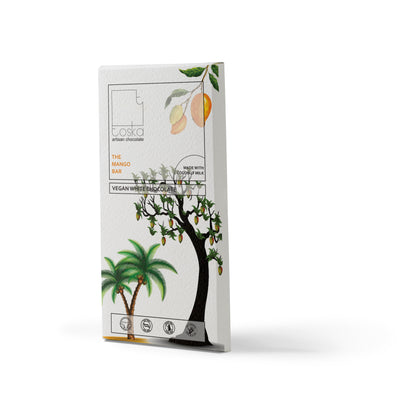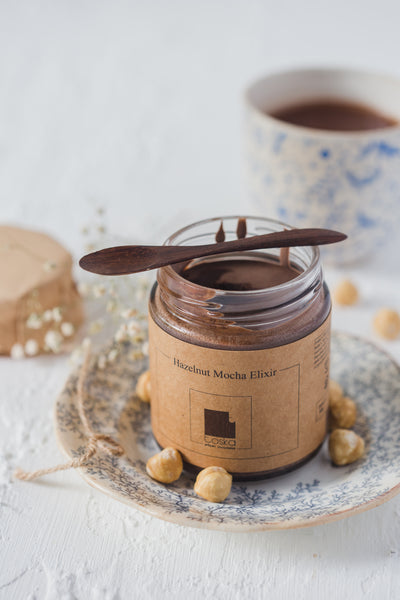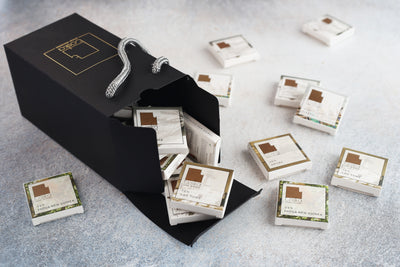4 Things you still don’t know about your favourite chocolate
Artisanal? 55% dark? Single-origin? White bloom?
Chocolate bars aren’t supposed to confuse us, they’re supposed to entice us!
Chocolate labels these days are bound to spin your head with facts about your favourite bar you never even knew to ask! And while the endeavour to educate chocolate lovers is well-meaning, who’s going to break down the jargon?!
Here at Toska, we’re all about not only creating avant-garde, gourmet chocolates but also making sure you know exactly what you’re loving.
Read on to find out how to read the label of your favourite chocolate bar and some other jargon you really ought to know.
Understanding Origins
Much like our own selection of single-origin bars, artisanal chocolate makers wish to control the ground-level quality of the chocolates right from their origin. While in the commercial business it is difficult to determine the origins of the cocoa beans used, here at Toska, we make signature chocolate blends with single origin cocoa i.e. cocoa beans grown only in one specific region. This not only allows for quality control, but the distinct terroir of the region brings out a singular refined taste that chocolate connoisseurs love and adore.
Some of the most famous cocoa beans that are our favourites at Toska come from Ghana, Tanzania, and Papua New Guinea and can all be found in our irresistible Origin Box!
The Cocoa Percentage
The cocoa percentage of chocolate essentially signifies the percentage of the weight of the chocolate that comes from cocoa mass i.e. comes from the actual bean while the rest can be sugar and other ingredients. Higher the percentage, the darker the chocolate as it contains that much more amount of cocoa mass. As a rough estimate, globally, the dark chocolate cocoa percentage starts from around 45% and can go as high as 75%. But don’t worry! Not all intense dark chocolate is plain bitter, precisely why we came up with the Black grape and walnut Toska, the perfect balance of dark, tart and crunchy!
The milk chocolate cocoa percentage lies below 45%, as the percentage slowly decreases, the chocolate gets mellower and sweeter in taste until finally at 0%, we get white chocolate!
Art of Artisanal
An artisan of a craft is regarded as a thought leader in the given subject and that’s true for us at Toska too! When a chocolate label reads artisanal chocolate, it usually means that each bar is hand-made and is usually produced in smaller quantities, which allows for excruciating detail-oriented processes to be followed for each treat! Read all about Toska’s artisanal bean to bar processing here.
Keeping it for a rainy day
On that off chance you don’t finish your chocolate in one go (we can’t relate!), there are storage hacks to preserve your favourite gourmet Toska for a later date or maybe even till your midnight snack time!
One of the cardinal sins of chocolate storage is carelessly tossing it in the fridge. As it sits there longer, it absorbs the various smells and flavours or worse yet, develops that dreaded white “sugar bloom” most chocolate labels warn us about! While the bloom does no harm, simply refrigerating your favourite Toska may make it smell like garlic, curries and last night’s leftovers.
The best way to counter that is to store them in airtight containers in a cool dry place but since cool dry places are rare and few in Indian summers, wrapping them in cling film and then placing them in an airtight container in refrigerators does the trick marvellously.
This way your white Toskas can last up to 4 months, milk Toskas up to a year, and dark Toskas almost 2 years!
Now that we've made our way through the luscious world of chocolates, we’re sure your knowledge and love for your favourite bar have increased immensely, so why not put your newfound skills to the test and pick out your new favourite gourmet Toskas here?


